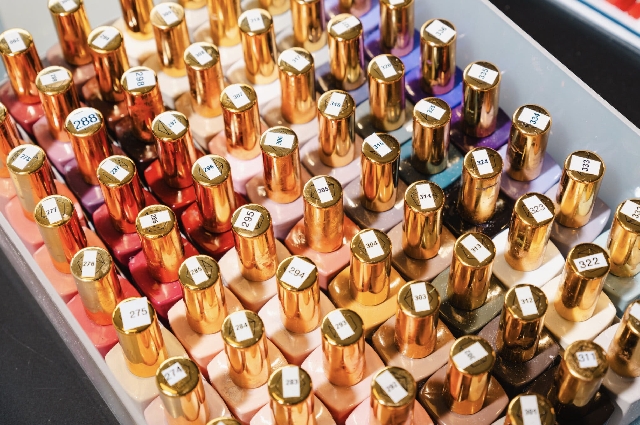Why the EU is banning some gel nail polish
 Lanna Apisukh for The New York Times (Pic): Starting this month, gel nail polish containing the ingredient trimethylbenzoyl diphenylphosphine oxide is banned in the European Union’s 27 member countries
Lanna Apisukh for The New York Times (Pic): Starting this month, gel nail polish containing the ingredient trimethylbenzoyl diphenylphosphine oxide is banned in the European Union’s 27 member countries
Starting this week, many salons in Europe will have to change their offerings for durable manicures and pedicures as a ban on some gel nail polish takes effect.
As of Sept. 1, a key chemical ingredient that makes gel-polish manicures harden and last for weeks can no longer be used in the European Union’s 27 member countries. The ingredient, trimethylbenzoyl diphenylphosphine oxide, also known as TPO, acts as an “artificial nail builder” after a person’s polished nails are held under a light in the salon.
Unpronounceable chemistry aside, the hardened, glassy seal formed by polishes containing TPO allows a gel manicure to stay in tact for longer than a traditional treatment, making it an attractive service.
At issue is TPO, a chemical that hardens gel polish.
TPO is a photoinitiator, which means, when present in gel nail polish, it hardens rapidly and cures by absorbing UV or LED light. While it can also be used in other products such as inks and adhesives, it is widely valued in gel nail polish because of its low-yellowing properties and broad UV-absorption qualities.
On May 12, the European Commission amended its regulations to say that TPO had been determined to be specifically toxic for human reproduction and that it “should no longer be allowed in cosmetic products” and instead added to the list of prohibited substances.
Studies have not established a link between TPO and health risks in humans, although consuming high doses has been linked to problems with fertility and development in rodents.
It’s unlikely to be banned in the U.S.
In general, the European Union takes a precautionary approach to regulation, issuing regulations even if there is only early data about how a product might harm health, while the United States is more reactionary and may issue bans only after a product has been roundly proven to harm health.
Caroline Rainsford, the director of science at the Cosmetic, Toiletry and Perfumery Association, a trade group in Britain, said in a statement on Wednesday that the decision was based on what kinds of effects the substance might have in a “worst case” scenario.
She said that the amount used in nail products was far less concentrated than the amount associated with harmful impacts shown in studies. When applied to the nail, “the potential for the ingredient to be absorbed into our bodies is even smaller,” she said.
The European Union’s Scientific Committee on Consumer Safety has said that TPO is safe when used as a nail product at a concentration of no more than 5 percent.
In general, the United States takes a more reactionary regulatory approach. Of the 10,000 ingredients used in cosmetics, just 11 have been banned by the Food and Drug Administration.
Research has been limited.
Most research linking TPO to health harms has been conducted in rats, with high oral doses linked to reduced fertility, testicular problems, fetal abnormalities and potential liver and kidney injuries. While research in rodents often doesn’t translate to humans, one study did suggest that TPO was toxic to human cells. Still, the levels these scientists tested were much higher than what you would get in the nail salon, and it’s not clear whether TPO applied to your nails would even be absorbed into your body, said Dr. Jacqueline Watchmaker, a cosmetic dermatologist in Arizona.
But, while the research into TPO is limited, the animal data seems reliable and is worth being careful about, said Elsie Sunderland, a toxicologist and environmental scientist at Harvard. As more research comes out, she expected that the harms of TPO would be demonstrated at lower levels.
While there’s no reason to panic, Dr. Sunderland said that it was not unreasonable to choose non-TPO products, since they were readily available. “What’s the loss?” she asked.
A bigger concern might be the lamps that are used to cure nails during gel manicures, since they often use ultraviolet radiation; repeated exposure may be linked to skin cancer. It’s why many experts recommend wearing broad-spectrum sunscreen on your hands before a manicure.
Alternatives are out there.
The ban is causing a shake-up at salons.
Gelbottle, Inc., a British company that provides polishes to salons in the United States, said measures such as the ban in Europe were proactive and not meant as a product recall.
It said that all of its products sold in the European Union are fully “TPO-free” and compliant with the regulation, but any bottles still held by salons needed to be replaced with TPO-free formulas.
“While this is an E.U. regulation, it is expected that the U.K. will adopt similar requirements at the end of 2026,” the company said.
It said at least 10 of its products still contained the chemical.
“We are actively transitioning all products to new TPO-free formulations, with reformulated versions already rolling out,” the company said, adding that it expected to have entirely TPO-free products by September 2026, ahead of a regulatory deadline in Britain.
Source: nytimes.com
Trending Entertainment

Nirvana baby loses legal case over 'Nevermind' album
19:13
Kweku Smoke announces first details for Revival 2025 concert
18:15
GTA congratulates Wode Maya, Dentaa, 3 others upon receipt of diplomatic passports
16:55
Obrafour praises Sarkodie for his striking respect, work ethic
20:21
KiDi on marriage and womanising
20:00
DStv clarifies FAQs confusion, emphasises company and Comm Min are agreed on value offerings
15:17
GTA boss Maame Efua Houadjeto visits Eastern Regional Office over 'strategic initiatives to elevate Ghana's tourism'
20:46
Gov’t, MultiChoice Ghana reach agreement on new DSTV pricing effective October 1
15:54
'Where do I begin?': Sarkodie dumbfounded after ginormous success of 'Rapperholic Homecoming' in Kumasi
20:09
Instagram vs reality: Bali is becoming a victim of its own success
19:09



